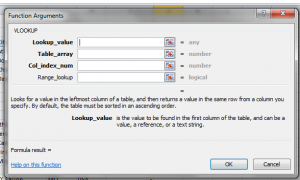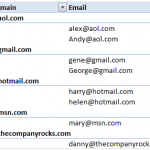I created this video tutorial to assist one of my viewers. He had 2 Excel Workbooks that he needed to combine. Because he had a MemberID Field in each workbook, I decided that the VLOOKUP() Function would be the fastest way to complete this task for my viewer.
Tips Covered in this Video
- Move or Copy a Worksheet to another Excel Workbook
- Use a Mixed Cell Reference – e.g. $A4 – so that column “A” reference is “frozen” when copying formula
- Create “Named Range” to use as the “Table_Array” argument in VLOOKUP
- Use FALSE as 4th (optional) argument in VLOOKUP to produce an “exact match”
- Use IFERROR to prevent “error messages” from displaying
Watch this Video in High Definition
Click on this link to watch this Excel Tutorial in High Definition on my YouTube Channel – DannyRocksExcels
Learn About My Training Resources
I invite you to visit my secure online shopping website – http://shop.thecompanyrocks.com – to learn about the many training resources that I offer for sale.

Watch Tutorial Now



